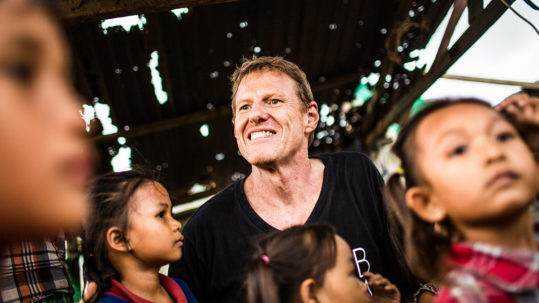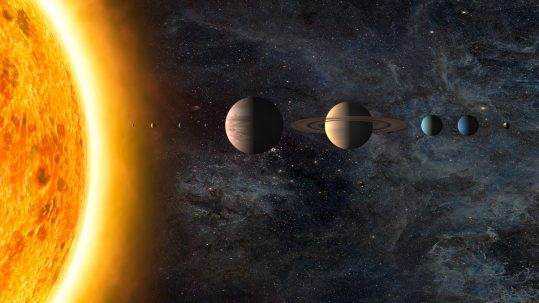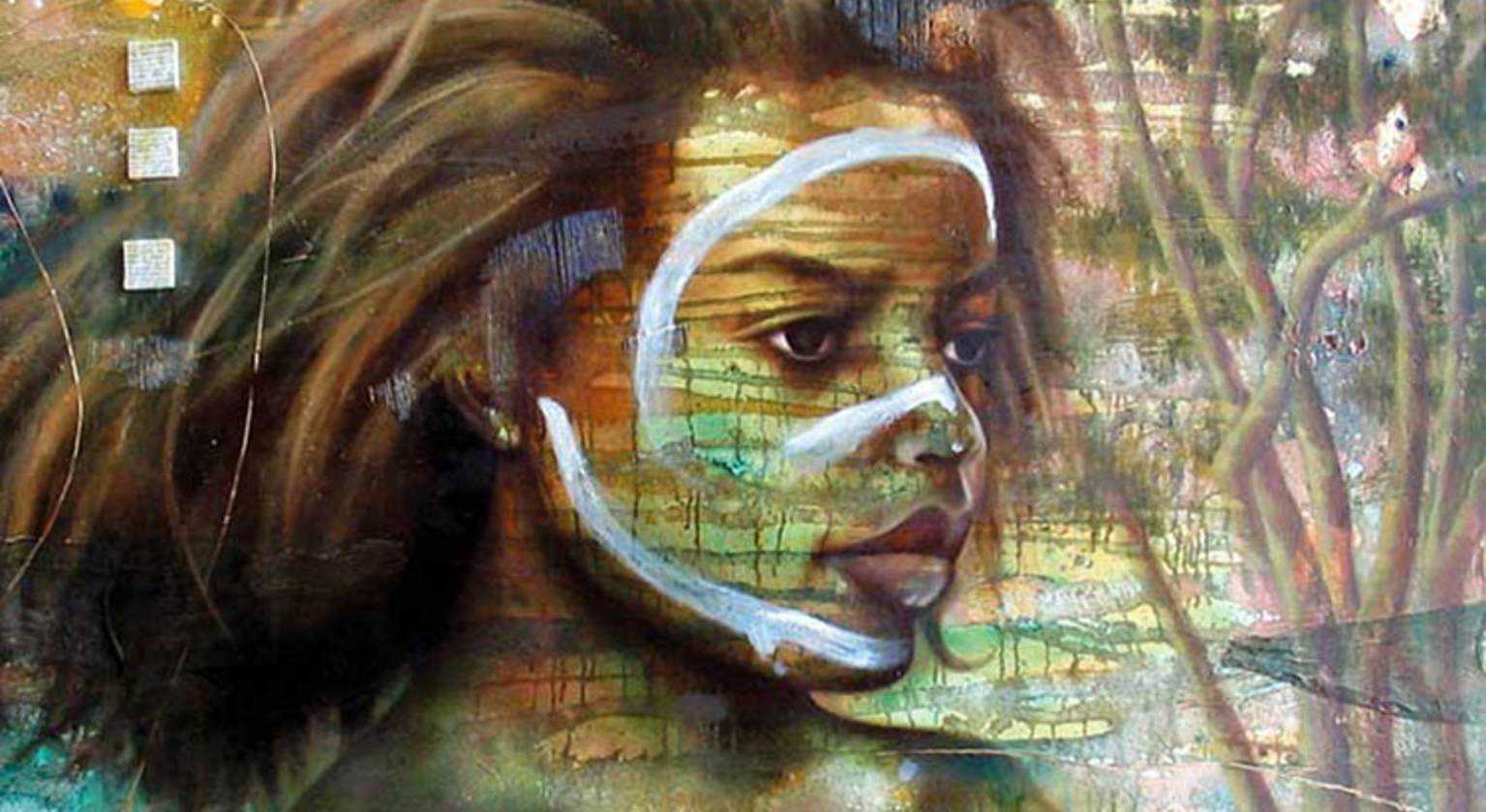
16 Jan Elisabeth Horowitz| Primitive Thinking
Painting by Simona Marziani | Courtesy of Elisabeth Horowitz.
Elisabeth Horowitz
For this second interview with Elisabeth Horowitz, psychologenealogist and prolific writer, we focus on her book, Pratiquer La Pensée Sauvage (Practice the Savage Mind), which was inspired by the work of illustrious anthropologists such as Claude Lévi-Strauss, Lucien Lévy-Bruhl, and James George Frazer. What does thinking by analogy mean? How do primitives attract what they want, influence their destiny, and manipulate the weather and the elements? Throughout this interview, we discover the magnificent world and mindset of the primitives, their highly advanced knowledge and understanding of their natural environment, synchronicities, their respect of the animal world, and their connection to the Divine.
By Victoria Adelaide | Jan 14. 2019
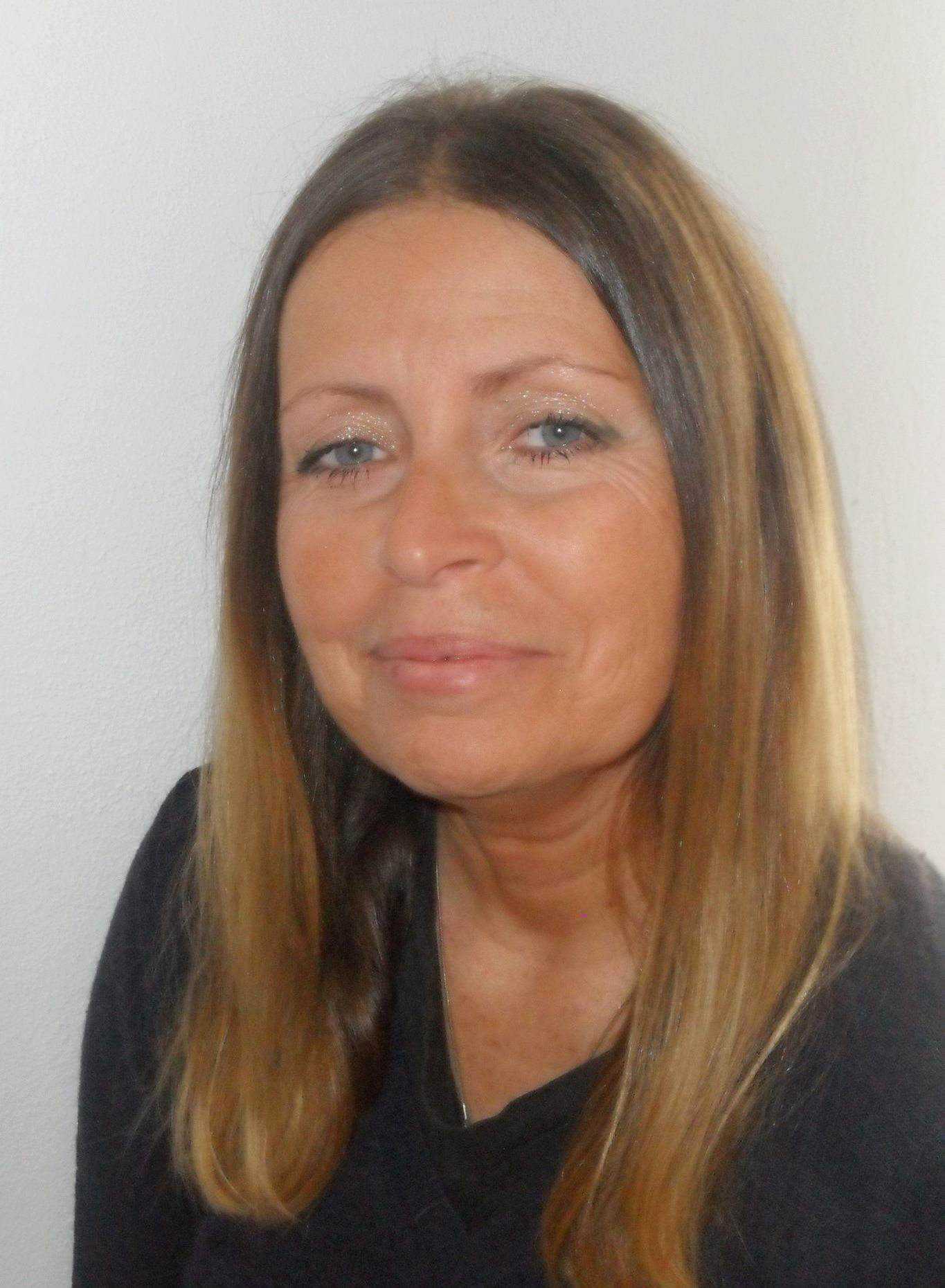
Photo courtesy of Elisabeth Horowitz.
Victoria Adelaide: Ms. Horowitz, your book, Pratiquer La Pensée Sauvage (Practice the Savage Mind) was inspired by several anthropologists who ignited your interest in anthropology and your curiosity about primitive thought. Could you tell us about them?
Elisabeth Horowitz: The Savage Mind is the title of a book by Claude Lévi-Strauss. Lévi-Strauss was a French anthropologist who began working in Brazil in the ’30s. He was one of a handful to testify on what primitive thinking is. However, before him, at the end of the 19th century, there were a few other anthropologists who played a crucial role in understanding what primitive thinking is. Among them, there were two English, Sir Edward Burnett Tylor and Sir James George Frazer, and one French, Lucien Lévy-Bruhl. Frazer wrote one of the pillars of international anthropology called The Golden Bough, which set the foundations of what we know today as primitive thinking, compiling tales from explorers and missionaries of previous centuries who traveled to Africa, Oceania, and America. Those stories are related to the thought processes of primitive peoples, how they interact with nature, and the rituals they implement in order to get certain things. Regarding Lucien Lévy-Bruhl, he may not have been as famous as Lévi-Strauss, but I believe he was even more interesting. Lévy-Bruhl had never set foot on those territories, but he compiled all the information found in books on international anthropology to show us how sympathetic magic works, how primitive peoples use images, what mana is, and so on. He wrote many books on the topic. The understanding of what primitive thinking is has truly been pioneered by Frazer in England and Lévy-Bruhl in France.
VA: Let’s start with the way the primitives think by analogy.
EH: Yes, first they think by analogy. For us, the usual way of thinking is cause and effect; however, they don’t resonate like that. They think that things are alike or not—for example, that there are things that look alike that will work together. If they create an image of something, they believe they will be able to draw into reality what that image symbolizes. For example, when they want rain, they are not going to think scientifically as we probably would; they are going to create something that looks like the clouds and that imitates the sound of rain to make it happen. So, to get rain, they will crush quartz and throw it away in the air, or they will use some feathers, some white duvet that will mimic rain. They will hit rocks and they will imitate the sound of thunder; they will also draw lightning. They will also be cautious not to say words that relate to heat or the sun. On their body, they will paint colors that match the weather they want to attract and will avoid clear and yellow colors. Thought by analogy is extraordinarily beautiful and it works; they get results by prefiguring what they want to get.
VA: On creating images…
EH: Here again, it’s a prefiguration of what they want to get. The primitives know that beyond words that generate action, there are also images. Images are important to get what they want, especially when going fishing or hunting, which are two significant aspects of their lives. Before going fishing, they draw on the ground the images of the fish they want to catch. They also make ceramic figurines and draw eyes on the boat to catch fish. It is the same when they go hunting; using charcoal or chalk, they draw the kind of game they want to catch on the ground or they make figurines. They multiply the figurines according to the amount of game they want. Sometimes, they go as far as to mimic the whole hunt from beginning to end in rituals that precede their hunt. They know the image is a prefiguration of what will happen in the real world in the next coming hours. The use of these images by miniaturization or enlargement is a technique that has been used in brief therapy.
VA: I can easily make the connection between primitive thought and the techniques used in brief therapy, as we spoke about it in our last interview.
EH: Indeed. One of the founders of the school of brief therapy of Palo Alto was Gregory Bateson. He was an anthropologist who went to Bali with his wife, Margaret Mead, in the ’50-60s, and they had a high level of knowledge about rituals. Bateson created the foundations for cybernetics and brief therapies, namely, to think by inversion and to change the context to produce change. Bateson and studies in anthropology have pioneered all the basics of brief therapy.
VA: On examining the real, in your book you wrote, “The primitive tribes know in detail all the living species; they watch carefully all the signs emitted by their environment. The primitives constantly study their surroundings.” Can we train the mind to examine the real, to become again—assuming it was our original mindset—as observant as the primitives in our modern world?
EH: Examining the real is not something that works only in the primitive context. To examine the real means to pay close attention to our surroundings and what we would call synchronicity. I’ll give you some examples: for many years, I’ve been keeping a diary of everything that happens during my day. If I go to have a coffee, I will listen to conversations. (smiles) If I go somewhere and there’s a song on the radio, I’ll make a mental note of it. I’m observant of everything that’s happening to me in detail, in the exact same way primitive peoples do in nature. The primitives know that everything is a signal; that’s why they are attentive to variations in their environment, to potential dangers. They know nature won’t take them by surprise; nature will always warn them by different means—birds’ tweets, small incidents, people who suddenly get sick before going on an expedition, and so on. How do we apply those principles in our daily life? It’s simple; we just need to have this hyper-consciousness about what’s happened to us during the day—things we are told, things we hear, objects we find on the ground, clouds that may have a particular shape, all these signs are an indication that’s telling us, “Go for it” or “Do not do it.” For primitive peoples, nature is not static and there’s another layer behind it, which is that hyper-consciousness that guides us and provides us with information before events happen. We can do it and we can examine the real in our modern lives. It’s mental training, but we can do precisely as the primitives in our environment.
VA: Well, then it’s all about mind training…
EH: Yes, but we must be humble because the ego must be diminished in intensity to give space for something bigger, which is the awakening of the consciousness. Then, with the awakening of the consciousness comes along this ability to be observant and receptive to our surroundings and to the signs that the universe is sending us. We must accept that the universe sends us messages that manifest in micro coincidences and simultaneities that warn us and send us information sometimes several days, weeks, or months before an event occurs. It’s fascinating and may also save our lives.
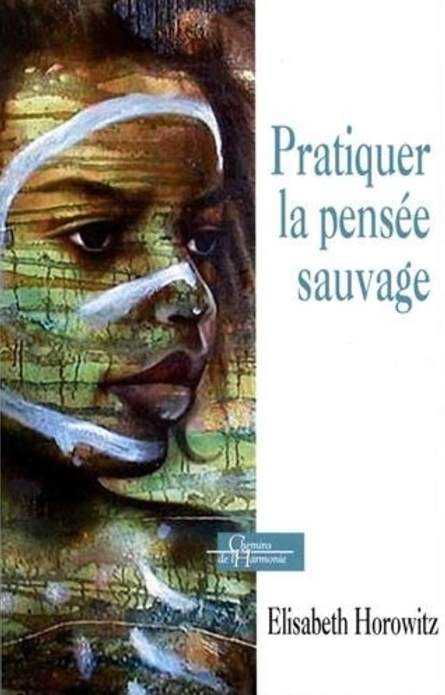 VA: What’s interesting is realizing that those we call primitives understood synchronicity way before us.
VA: What’s interesting is realizing that those we call primitives understood synchronicity way before us.
EH: Absolutely. The primitives understood synchronicity, that simultaneous events have signification that must be considered, and that nature is not meaningless but a source of information that manifests as signs, occurrences, repetitions, and simultaneities. By considering this, we have every chance to optimize our life. That means we won’t go to specific places if we don’t feel like it. We won’t go fishing or hunting because there may be a potential danger. We’ll give up at the slightest negative sign, especially if we had a negative dream about it. If dreams are not favorable, we don’t go. The primitives watch everything and not only the weather but also on a human level. If before going somewhere people get sick, argue with each other, or if there is a storm, they won’t go. They are aware that situations can spread remotely and that there is remote influence. For instance, if they go in the jungle on several days’ expedition, there are prohibitions; people can’t argue, they eat in small amounts, and to keep those who are far away from danger, not a single incident must occur in the village. They are way ahead in quantum physics. Quantum physics tells us that there are particles that travel remotely, that there is an exchange of information in whatever space and time. They already know that.
VA: Do you think that evolution as we know it on a technical, economic level is what destroyed this innate ability we were originally gifted with to develop our senses and connection with our environment and beyond?
EH: Yes, and we know well that the birth of capitalism swept away everything. It’s a human tragedy. Before the arrival of explorers, Jesuits and all those people who colonized, evangelized, and extracted riches from the soil, established capitalism in areas where people were living simple lives. In those primitive societies, they had a strong connection with what we call the paranormal, which was their normality. Drugs were used in primitive societies. They used it as a means of discovery, knowledge, and as a cure for certain illnesses. It was an aspect of their everyday life. Hallucinogenic plants and smoking herbs were part of their many rituals in connection with their natural environment and to a higher frame of mind. They had a tremendous knowledge of their environment and how to use it.
VA: You said the primitives knew words could create reality and, in certain situations, words were prohibited. Could you tell us about that?
EH: Yes, especially in dangerous situations. In my book, I told a story where some primitive peoples have to cross a lake. There’s a stranger with them, a British woman, and that woman is talkative; at some point, they tell her to stop talking for the remainder of time spent crossing the lake because they know words can create situations and that could play against them. They are careful not to pronounce any words that could attract any danger. Either they do not speak or certain words are banned from the conversation.
VA: Can you explain what mana is?
EH: Mana means strength, heat, and power. Mana is a power, an energy that exists in the universe. All primitive societies have noticed that power—that energy—exists. The characteristic of this energy is that it is distributed unequally in people, nature, object, places, animals, and so on. People who have mana are often healers and they have a destiny out of the norm. They possess a sort of magnetism or an innate ability to attract people around them. Warm energy emanates from those people whether it is emotional, intellectual, physical, or spiritual. Some animals have mana and they will have an unconventional destiny. Some objects will have power and may bring luck. Some places that are charged magnetically with heavy energy have mana and are used for healing, such as at water points, in the forest, and under the sun. In humans, mana is present in people according to the circumstances of their conception, of their birth, and the cosmic events also in simultaneity with their birth, such as twin births and people born during eclipses or equinoxes. There are some people and things that have that power, that extra force that fills the universe.
VA: Living naked is something unthinkable in society and yet, this is how primitive people live. What is, to the primitives, the relationship with the body and the mind versus how we view being dressed?
EH: For us, being completely naked would not be possible because of the climate of our Western world. That’s why capitalism took off in areas where the climate was temperate or even cold in winter. In winter, you have to wear warm clothing. It cut the link to nature that tribes in Oceania, Africa, Central America, and South America kept. They lived relatively naked, but not entirely, as they have many body ornaments, decorations, tattoos, scarification, a lot of jewelry, masks, and wear animal skin. There’s a whole symbolism about body ornaments; for them, nudity is power. Very often, they paint their body in red because red is the color of blood and when they want to increase their power, they cover their bodies with red paint on top of all their tattoos and scarifications. There’s also all that has to do with hair, earrings, necklaces, ankle rings, and different masks. In the beginning, masks were integral; the entire body was covered during ceremonies and they could amplify the height of humans significantly. Nudity is a source of power for the primitives because it creates proximity with nature. In winter, they sleep naked in animal skin to absorb the energy of the animal, but only if they have not killed the animal themselves, as it would bring them misfortune.
VA: You wrote that the color of death is white?
EH: Yes, because it’s the color of the immaterial spirit. When they take drugs or when they smoke, they see the spirits, and those spirits do not have any textures; they are in their ghostly form. For them, the color of misfortune or death is white.
VA: Talking about death, they have specific hunting rituals. What are they?
EH: When they hunt animals, there are ceremonies before the hunt to calm the animals’ minds. They ask them for forgiveness before killing them. They make a quota and there is no unnecessary killing. When they come back from hunting, they are not part of the community during the few days that follow the hunt. They are put in a sort of quarantine. When the animal is being taken apart, they pray. They will look at the animal’s bones, which will be maintained, suspended, and smeared with fat. There’s a whole post-mortem ritual of thanks to the animals they killed. By killing animals, they are afraid they will not breed anymore or that they will not want to be killed anymore. They are dependent on hunting and fishing and meat is essential to their diet; therefore, it’s crucial to appease the animals’ mind, not to hurt the animals too much, and to eat meat as little as possible just to survive. Nowadays, it’s completely different. When we see the level of barbarism, the way animals are killed in slaughterhouses, in total disrespect, it’s unbearable. Just through that, society is leading to its downfall, and the primitives understood that very well.
VA: They truly developed a natural connection with everything visible and invisible…and that very interesting perspective on dreams and the way they use them…
EH: Yes, for them, dreams are another dimension of the real and are perhaps even superior to reality in the awake state. All their dreams are significant and they talk about it together. For instance, if someone dreams that he went to another country, when he wakes up he is welcomed as if he just came back from that foreign country. That means for them, the dream has the same texture as the real. Also, when the dream is negative, they see it as a sign of danger; they will orchestrate the dream in the real because they believe that it can happen. If a primitive dreams that his hut caught on fire, he will deliberately put his hut on fire because, by orchestrating his dream, it won’t happen in the future. By doing that they kill the content of the dream.
VA: On healing…
EH: They have different ways of healing. They have the greatest knowledge of plants; it’s all the natural pharmacopeia that they have at their disposal. It is presumed they’ve seen all the virtues of the plants in a dream or when they take drugs. The primitives use drugs as a tool of knowledge, to get information on their natural environment, on what they can do with this or that plant, how to use it, at which period of the year, which dosage, and so on. They treat themselves primarily according to nature’s indications, using the knowledge they have of their environment. Some of them, such as shamans, have higher powers and an ability to open bodies, as was done with bare hands by some renowned healers such as Pachita in Mexico in the ’70s and some Filipino healers. It is thought that shamans open bodies without causing bleeding and extract and replace organs. When some diseases are the result of conflicts or psychological trauma, they do symbolic interventions. They pretend to remove from the body objects that were inserted or that materialized in the body. Some shamans suck the body to symbolically remove, extract, or absorb substances. It’s a kind of therapy; it’s an orchestration. In some cases, it’s real, and in others, it’s purely symbolic. That’s what Lévi-Strauss called symbolic efficiency. They know very well that some diseases of a psychological nature can only be treated by pretending to remove from the body what has slipped into it.
...We must accept that the universe sends us messages that manifest in micro coincidences and simultaneities...``



